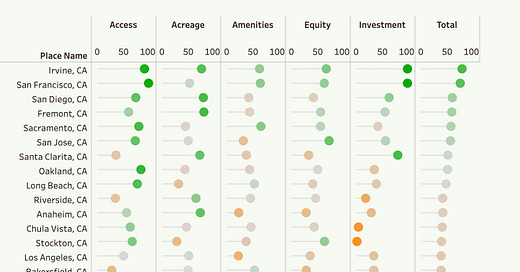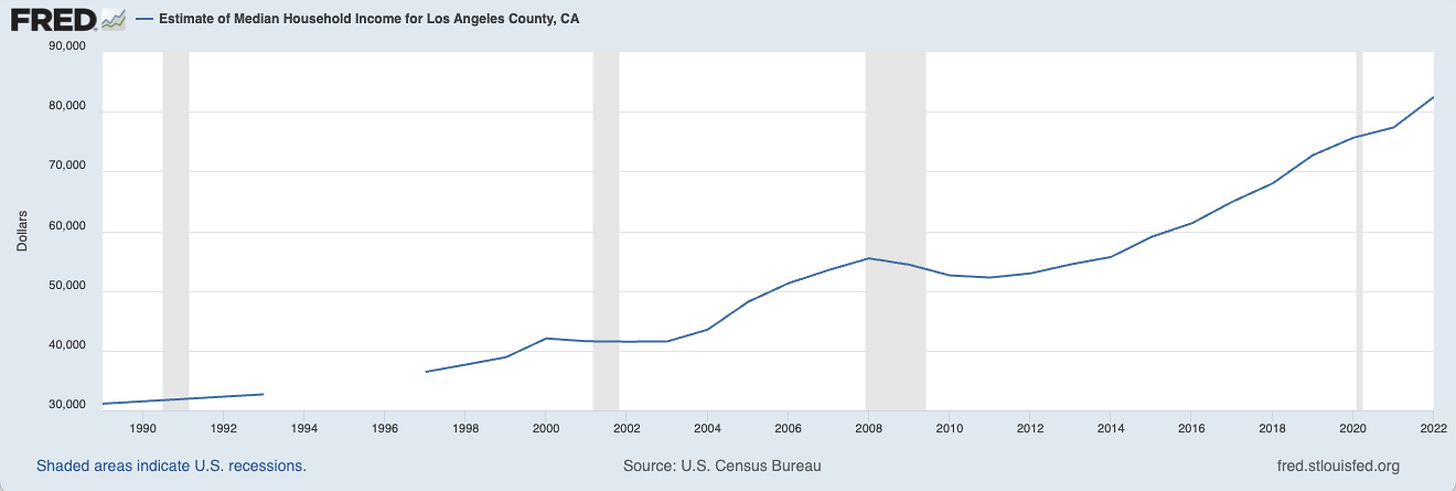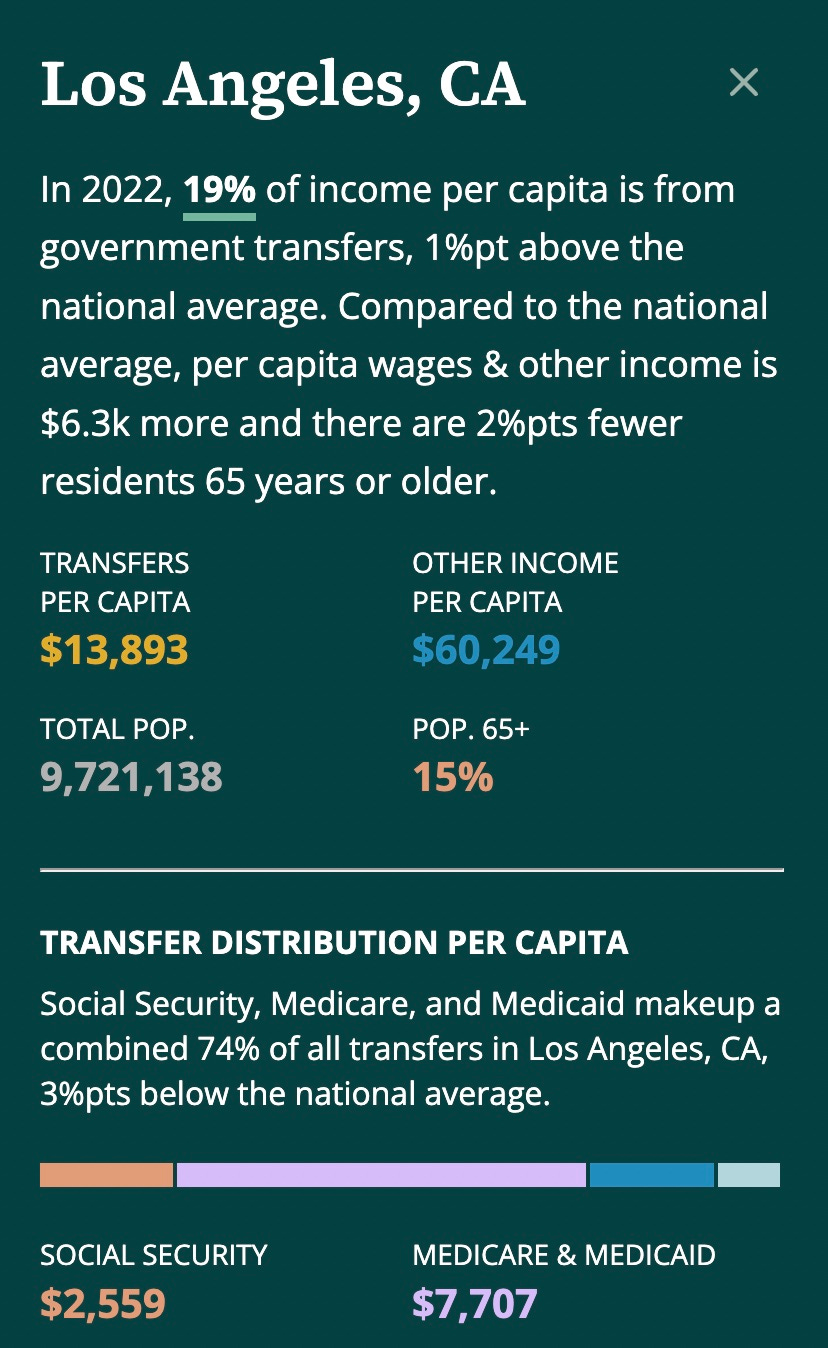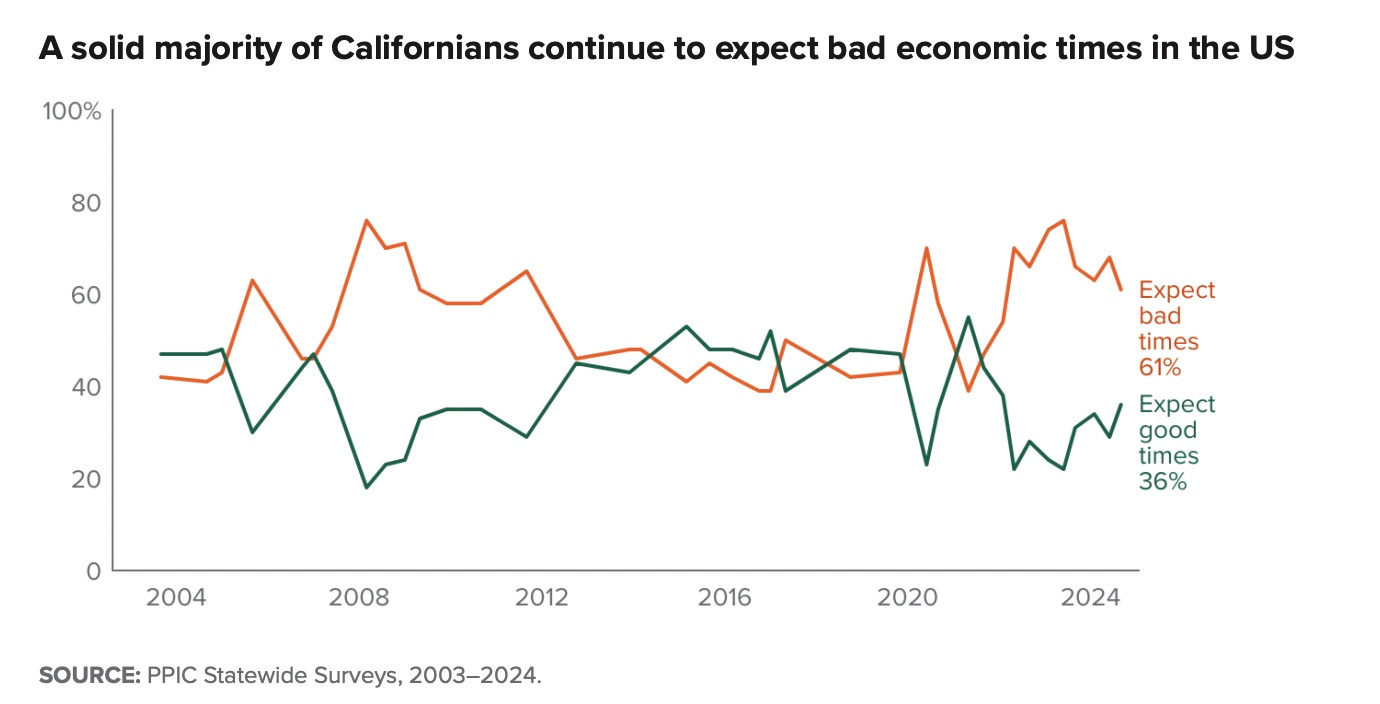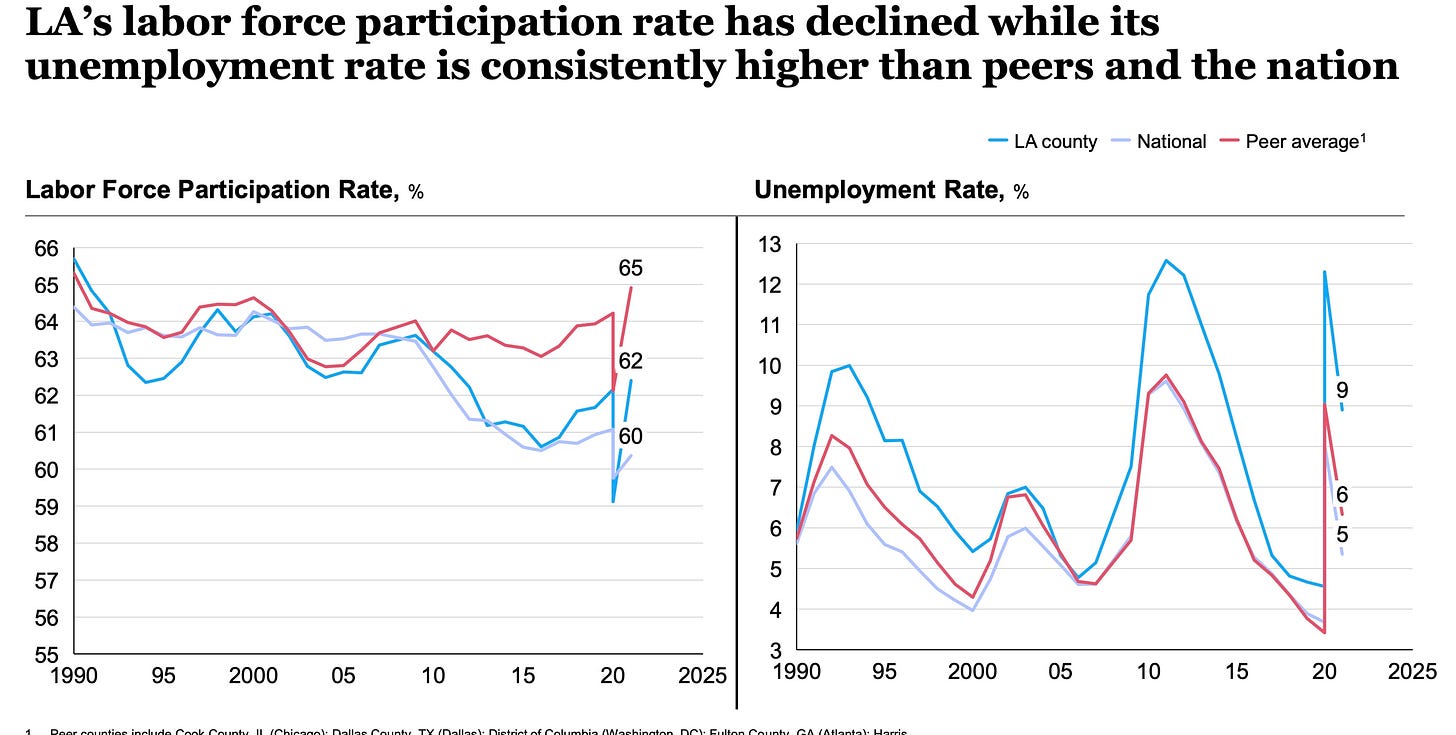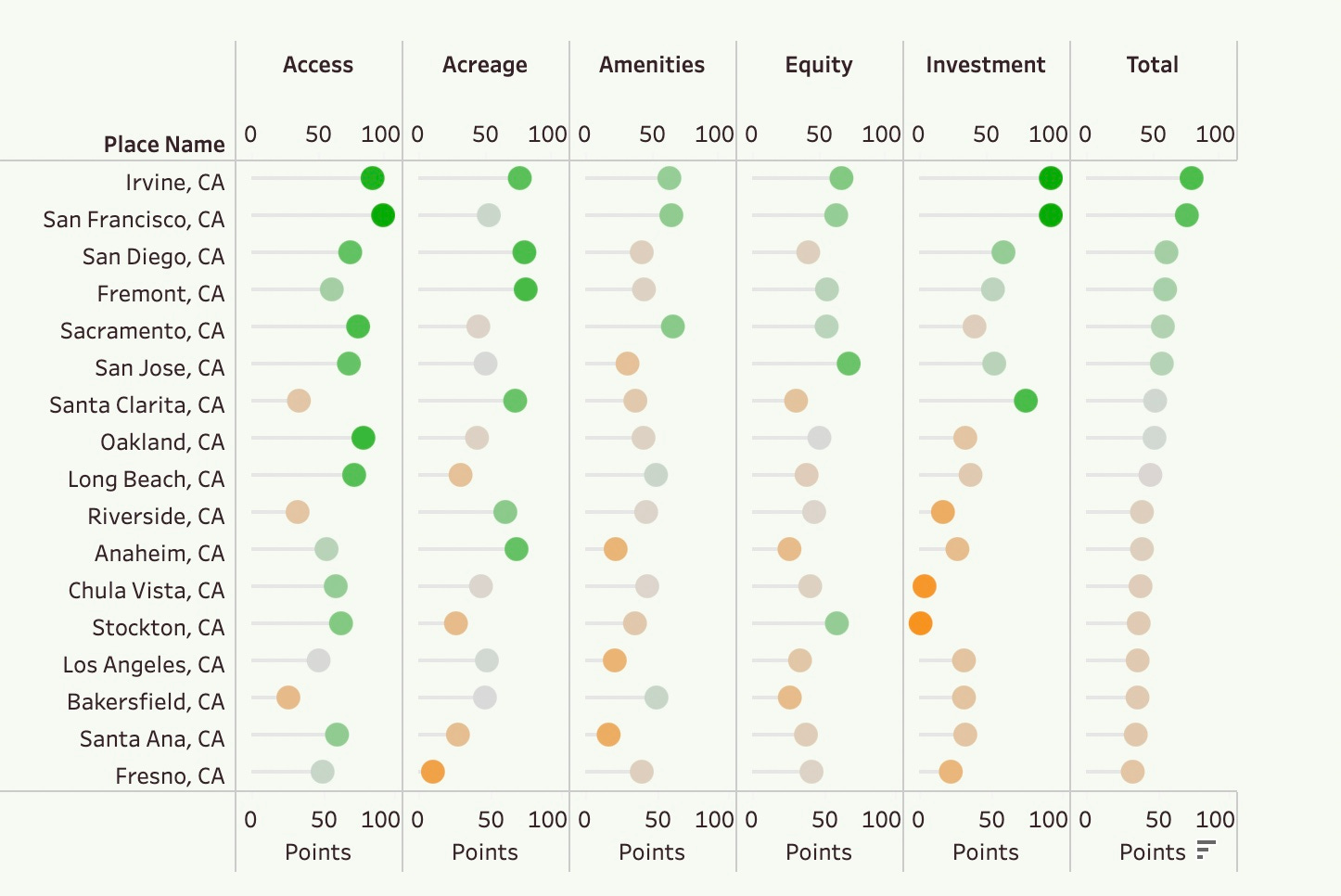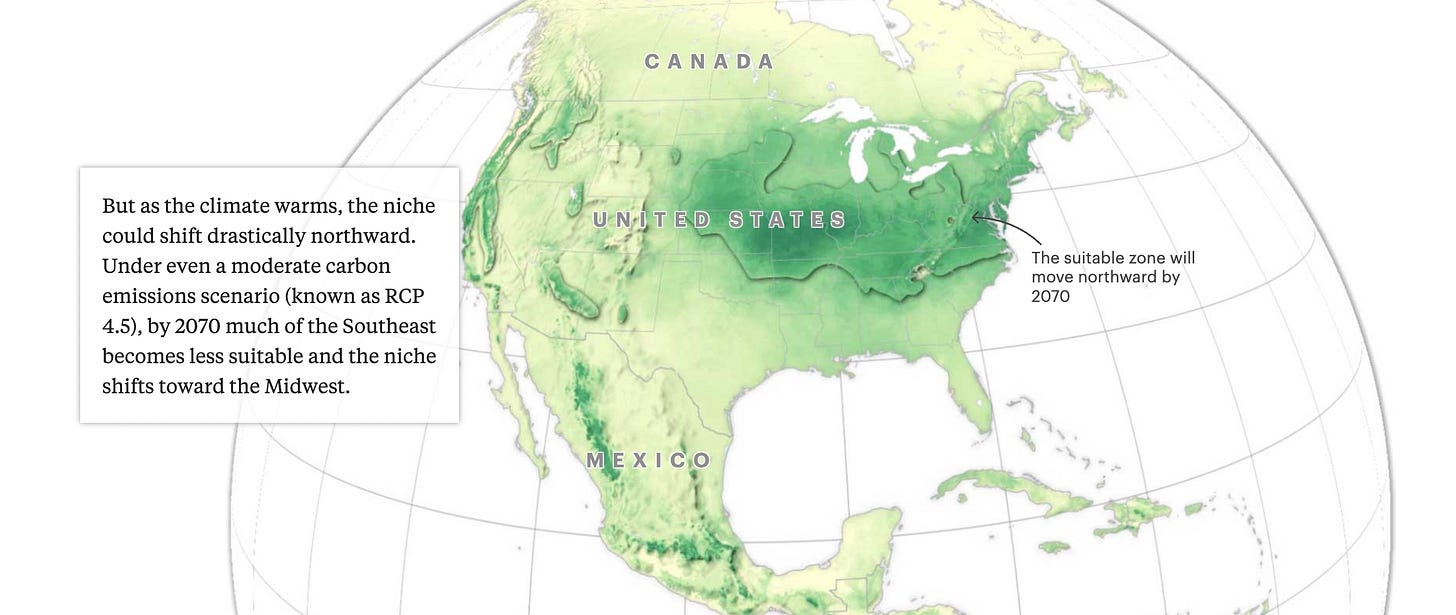Jobs, Jobs, Jobs
A new jobs report shows the U.S. economy is headed in the right direction, where inflation moves down without major deterioration in the labor market. Employers added 254,000 jobs last month. Economists expected 150,000. This is the largest monthly increase since March. The unemployment rate slipped to 4.1%, and wages picked up slightly.
Job Sector Growth: Eating and drinking businesses, healthcare, government, construction, and retail.
Job Sector Declines: Manufacturing, transportation, and warehousing jobs
Little change: Business services and information, including the struggling film industry. (LA Times)
More Good News: A Rebound in Inflation-Adjusted Incomes
The median household income, adjusted for inflation, rose 4% to $80,610 in 2023, up from $77,450 in 2022. (Census Bureau)
It was the first increase since 2019 and is essentially unchanged from that year’s figure of $81,210.
The proportion of Americans living in poverty also fell slightly last year, to 11.1%, from 11.5% in 2022.
Though, the ratio of women’s median earnings to men’s widened for the first time in more than two decades as men’s income rose more than women’s in 2023.
A tracking of LA County’s Median Household Income (Federal Reserve Bank of St. Louis; September 22, 2024)
And a comparison to the region (SoCal) and state (California) (DataSource)
More Money, More Problems…
In 2009, the median home price was $220,900 (Federal Reserve), and a new car cost an average of $23,276 (Energy Department).
Had prices increased at the rate of the consumer-price index, the average house would cost $322,000 today and a car would cost $34,000.
An average house goes for $412,000 today, and a typical new car is $48,000. (Kelley Blue Book)
The national going rate for a babysitter fifteen years ago was $10.50 an hour, according to Care.com. Now it’s $18.38, 20% more than if the cost had tracked the consumer-price index.
The Challenge Ahead
Job seekers are competing for fewer openings, and hiring is sluggish
A spring survey of employers by the National Association of Colleges and Employers found that hiring projections for this year’s college graduating class were below last year’s rates.
And it showed that finance, insurance, and real estate companies were planning a 14.5 percent decrease in hiring this year, a sharp U-turn from its 16.7 percent increase last year.
More noticeably, the latest report from the Bureau of Labor Statistics shows the overall pace of hiring in professional and business services — a go-to for many young graduates — is down to levels not seen since 2009.
Wake up LA!
A recent LA Times article from September 20, 2024, reported that CA’s labor market weakened at the end of summer, with the unemployment rate ticking up again. (New numbers will be out in another month.)
CA Unemployment rate: 5.3% in August (from 5.2% in July), tied with Illinois for the second highest behind Nevada’s 5.5% rate (U.S. Bureau of Labor Statistics)
LA City (6.8%) and County (6.7% )!!!
Sector Gains: Healthcare and leisure and hospitality.
Sector Declines: Motion pictures industry, tech, and manufacturing. Motion picture employment in Los Angeles County dipped below 100,000 in August.
In CA there were more than 1 million jobless workers as of August, with a disproportionately larger number of them being younger workers. The number of unemployed people in the U.S. has grown by 775,000 over the last year, to more than 7.1 million. (Beacon Economics.)
CA’s relatively high and rising unemployment rate also may reflect the surge in immigration that has added to the labor pool.
What are people doing to pay the bills???:
CA is one of the nation’s leaders in self-employed workers, reporting that 11.6% of the total workforce in 2022 was self-employed, a higher rate than the US as a whole (10.1%) and making us 8th in the nation.
LA is a leading hub of entrepreneurs, independent contractors, freelance, and remote workers.
Self-employment rates are highest in Los Angeles County (14.1%), as compared to other regions across the state.
‘Softening’ Job Market at Small Firms: The latest National Federation Independent Business survey finds fewer employers with open positions.
34 percent (seasonally adjusted) of all owners reported job openings they could not fill in the current period, down 6 points from August and the lowest reading since January 2021.
30 percent have openings for skilled workers (down 6 points) and 14 percent have openings for unskilled labor (down 1 point). Overall, the job market seems to be softening.
Job openings were the highest in the construction, transportation, and manufacturing sectors, and the lowest in the agriculture and finance sectors.
However, job openings in construction were down 7 points from last month with 53 percent having a job opening they can’t fill.
Overall, the percentage of firms with one or more job openings they can’t fill remains at exceptionally high levels. This indicates continued upward pressure on compensation and, ultimately, on inflation. As labor markets soften overall, small firms may find more success in filling open positions.
The Bureau of Economic Analysis Data We Need to Pay Attention To…
Not since the aftermath of World War II has the US confronted a fiscal situation as troubling as the one it now faces. Back then, it could count on favorable demographics to grow the economy back to fiscal sustainability. This time is different.
The demographic trends pushing the transfer share higher are set to continue, with the over-65 population projected to swell by 20 million people, while the working-age population will grow by just 6 million.
In general, areas that are older, more rural, and less wealthy tend to be significantly reliant on transfers.
Many metropolitan hubs, affluent suburbs and exurbs, and high-income, high-productivity farming and mining communities remain minimally reliant on transfer income to power their local economies.
For now, the numbers for LA County don’t look too bad when compared to the rest of the nation.
Yet…
Age groups between 2010 and 2022, the 65+ age group grew the fastest, increasing by 38%, while the 5 to 19 age group decreased the most, dropping by 15.5%.
Population decline between 2021 and 2022, Los Angeles County's population declined by 0.828%.
The county's median age increased by 2.6 years between 2012 and 2022, which is more than 50% higher than the national rate of aging.
CA and LA continue to be the net leaders in net migration of young households (ages 26 to 35) that earn at least $200,000 a year.
All of This Uncertainty is Making Angelenos and Californians Less Happy
CalMatters sent out their daily missive on California’s politics and policy scene, and last Tuesday (September 24, 2024) the topic right out of the gate was about Californians’ happiness levels.
They shared a recent survey by the Public Policy Institute of California, which showed that most California adults (55%) said that the state is headed in the wrong direction and that they can trust the state government to do the right thing “only some of the time.” A solid majority also expect “bad financial times” for the country within the next year.
The CA Legislature’s Response…
Writing a report that says: “In our 175-year history as a state, the California State Assembly has not considered how California can improve the happiness of its people. Happiness is seen as a byproduct of the work we do to build housing, improve education, and boost wages, among other things. … But is that all that leads to happiness?” The committee, which met three times since March, concluded that unhappiness is growing across the state. (Writing reports creates jobs but not results :)
The report…
Seven of the top 10 happiest counties are on the coast and have higher-than-average median income levels.
Meanwhile, 9 of the 10 unhappiest counties are inland; People living in poverty are three times more likely to experience anxiety or depression than wealthier people.
Legislators should consider happiness when developing policies, and should “openly discuss and question a bill’s potential” on happiness; They should think creatively when developing happiness-related policies and collaborate across different agencies; They should prioritize efforts to boost trust between the public and the state government.
Younger college kids are even unhappy!
Real wages have remained moribund since the 1970s, a hard pill to swallow in the face of the last several years of inflation. Today’s young adults feel worse off than their parents because their salaries no longer buy a suburban starter home with a picket fence.
House prices have outpaced inflation, making homeownership a bigger challenge. Gen Z-ers have more student loans than millennials, and big, corporate salaries seemingly promise a salve for all one’s financial worries.
But what is missing in this race to perceived economic safety is the emotional toll. The number of young adults ages 18 to 25 who have had at least one depressive episode has doubled from 2010 to 2020.
Almost two-thirds of college students have reported feeling “overwhelming anxiety” within a given year, and experts have pointed to the cocktail of coursework, pressure to participate in extracurricular activities, and concerns over choosing a career as causes. (NYT: September 24, 2024)
What Will Make Angelenos More Happy?
Build more housing for all income levels…
Get more Angelenos Off the Sidelines and Into Jobs
Underemployment appears to be driven by a skills mismatch, not a lack of jobs. Let’s be honest about what works and does not work.
Build More Park Space in the Communities that Need it Most
Parks and quality of life go hand in hand. Each year, the Trust for Public Land gives the 100 largest cities in the U.S. a “park score” based on park acres, facilities and investment, and resident access to local parks. Cities like Minneapolis, MN; St. Paul, MN; and San Francisco, CA top the list with park scores of more than 80 out of a possible 100 points. Comparatively, Los Angeles in 2018 had a park score of just 41, ranking 74th out of 100 cities.
LA is currently 88th! (Full 2024 index) and near the bottom is CA!
The Challenge: South L.A. residents ask for green park space — the city answered with concrete and fencing
Other ideas to foster more happiness in LA
Two Interesting News Items
Mexico Is Building a $7.5 Billion Trade Route to Compete With Panama Canal (WSJ)
The Panama Canal isn’t as reliable as it once was, and Mexico is racing to build a new corridor connecting the Pacific and Atlantic Oceans that would help fill the gap. WSJ explores whether it will lead to faster or cheaper shipping.
The People Fleeing Climate Disasters Are Going to Transform the American South (NYT)
One study by the First Street Foundation, a research firm that studies climate threats to housing, found that roughly 3.2 million Americans have already migrated, many over short distances, out of flood zones, such as low-lying parts of Staten Island, Miami and Galveston, Texas. Over the next 30 years, 7.5 million more are projected to leave those perennially flooded zones, according to the study.
Thank you for reading…Michael Kelly and Deidre Lind

